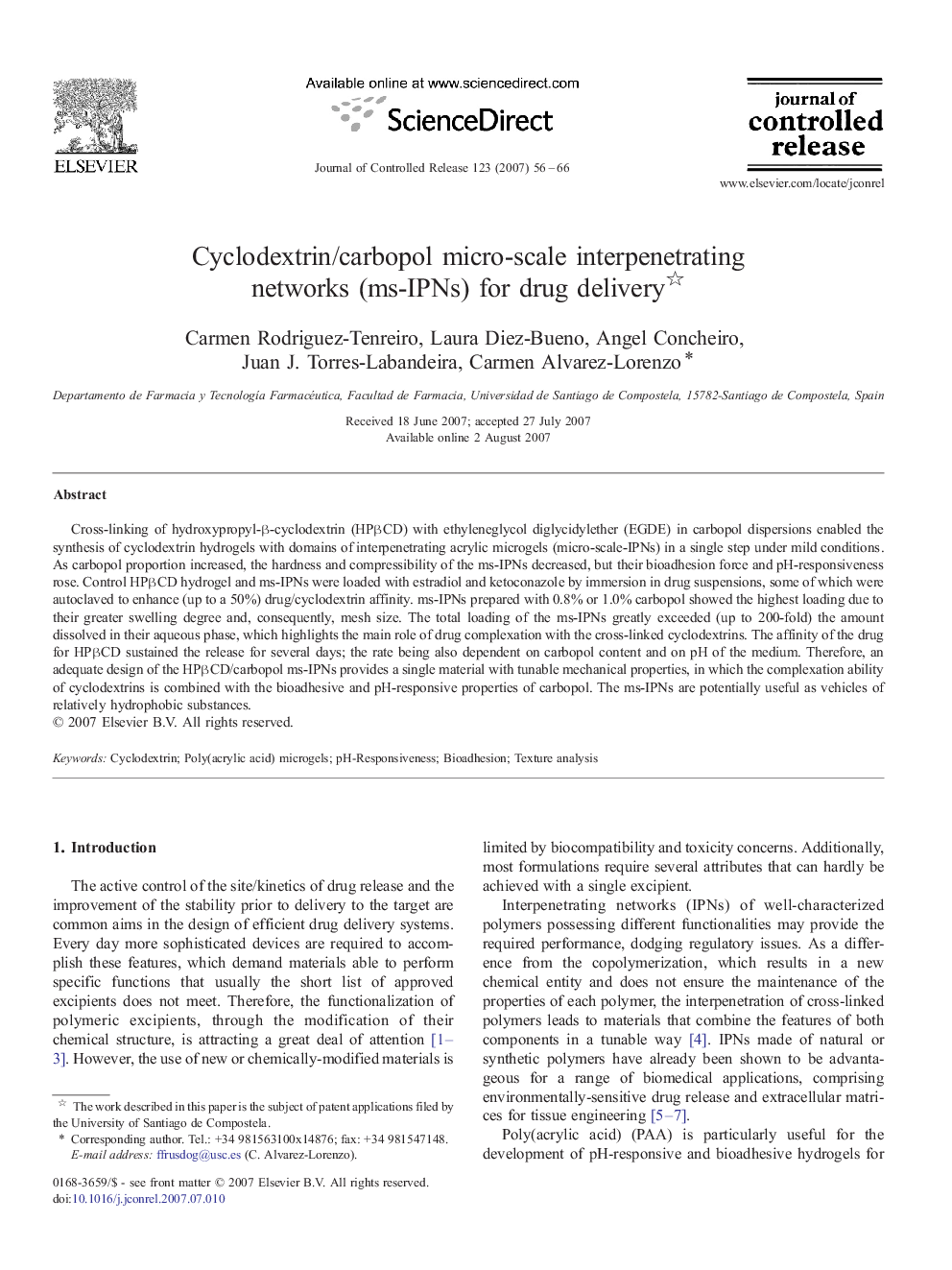| Article ID | Journal | Published Year | Pages | File Type |
|---|---|---|---|---|
| 1427058 | Journal of Controlled Release | 2007 | 11 Pages |
Cross-linking of hydroxypropyl-β-cyclodextrin (HPβCD) with ethyleneglycol diglycidylether (EGDE) in carbopol dispersions enabled the synthesis of cyclodextrin hydrogels with domains of interpenetrating acrylic microgels (micro-scale-IPNs) in a single step under mild conditions. As carbopol proportion increased, the hardness and compressibility of the ms-IPNs decreased, but their bioadhesion force and pH-responsiveness rose. Control HPβCD hydrogel and ms-IPNs were loaded with estradiol and ketoconazole by immersion in drug suspensions, some of which were autoclaved to enhance (up to a 50%) drug/cyclodextrin affinity. ms-IPNs prepared with 0.8% or 1.0% carbopol showed the highest loading due to their greater swelling degree and, consequently, mesh size. The total loading of the ms-IPNs greatly exceeded (up to 200-fold) the amount dissolved in their aqueous phase, which highlights the main role of drug complexation with the cross-linked cyclodextrins. The affinity of the drug for HPβCD sustained the release for several days; the rate being also dependent on carbopol content and on pH of the medium. Therefore, an adequate design of the HPβCD/carbopol ms-IPNs provides a single material with tunable mechanical properties, in which the complexation ability of cyclodextrins is combined with the bioadhesive and pH-responsive properties of carbopol. The ms-IPNs are potentially useful as vehicles of relatively hydrophobic substances.
